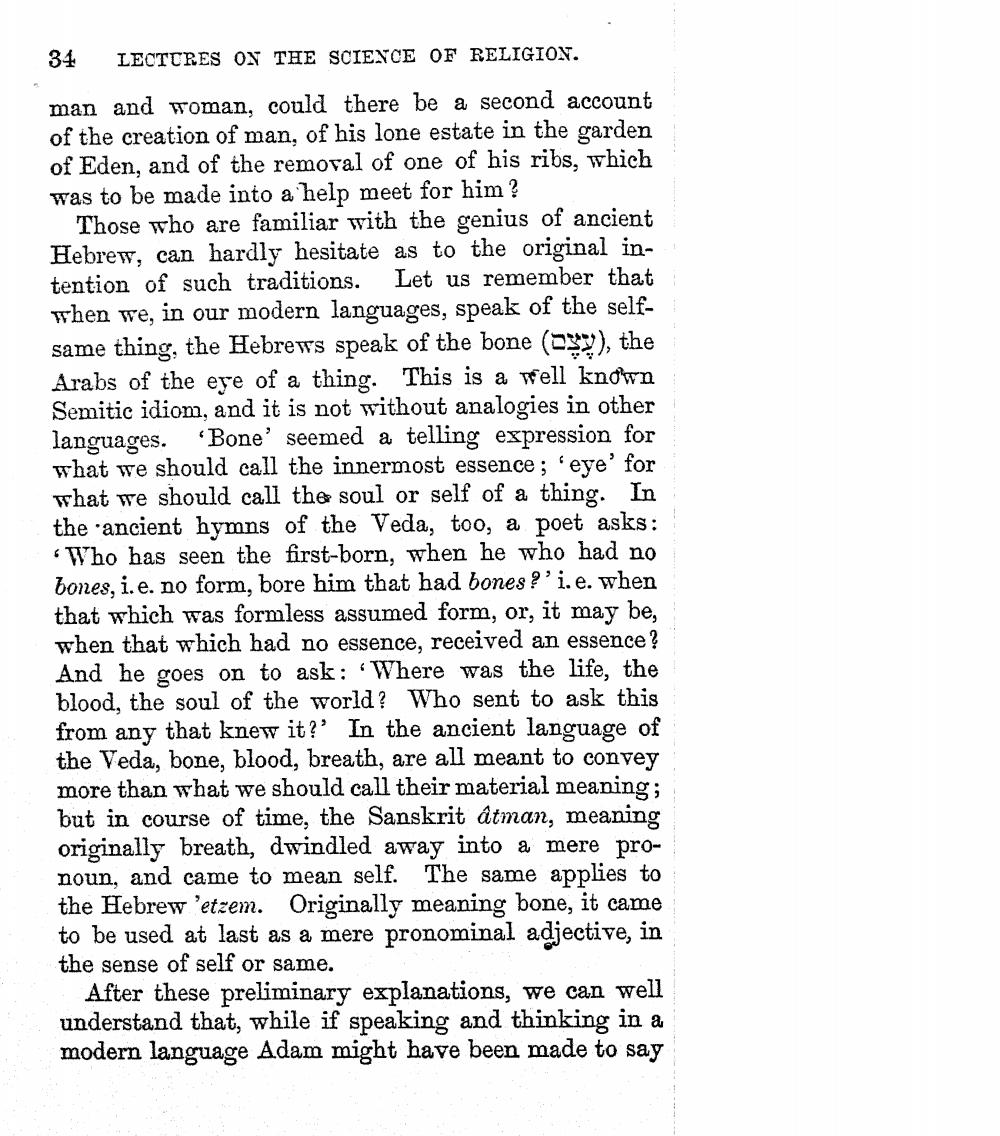________________
34
LECTURES ON THE SCIENCE OF RELIGION.
man and woman, could there be a second account of the creation of man, of his lone estate in the garden of Eden, and of the removal of one of his ribs, which was to be made into a help meet for him?
Those who are familiar with the genius of ancient Hebrew, can hardly hesitate as to the original intention of such traditions. Let us remember that when we, in our modern languages, speak of the selfsame thing, the Hebrews speak of the bone (-37), the Arabs of the eye of a thing. This is a well known Semitic idiom, and it is not without analogies in other languages. 'Bone' seemed a telling espression for what we should call the innermost essence; 'eye' for what we should call the soul or self of a thing. In the ancient hymns of the Veda, too, a poet asks: Who has seen the first-born, when he who had no bones, i.e. no form, bore him that had bones?' i.e. when that which was formless assumed form, or, it may be, when that which had no essence, received an essence ? And he goes on to ask: 'Where was the life, the blood, the soul of the world? Who sent to ask this from any that knew it?' In the ancient language of the Veda, bone, blood, breath, are all meant to convey more than what we should call their material meaning; but in course of time, the Sanskrit âtman, meaning originally breath, dwindled away into a mere pronoun, and came to mean self. The same applies to the Hebrew 'etzem. Originally meaning bone, it came to be used at last as a mere pronominal adjective, in the sense of self or same.
After these preliminary explanations, we can well understand that, while if speaking and thinking in a modern language Adam might have been made to say




